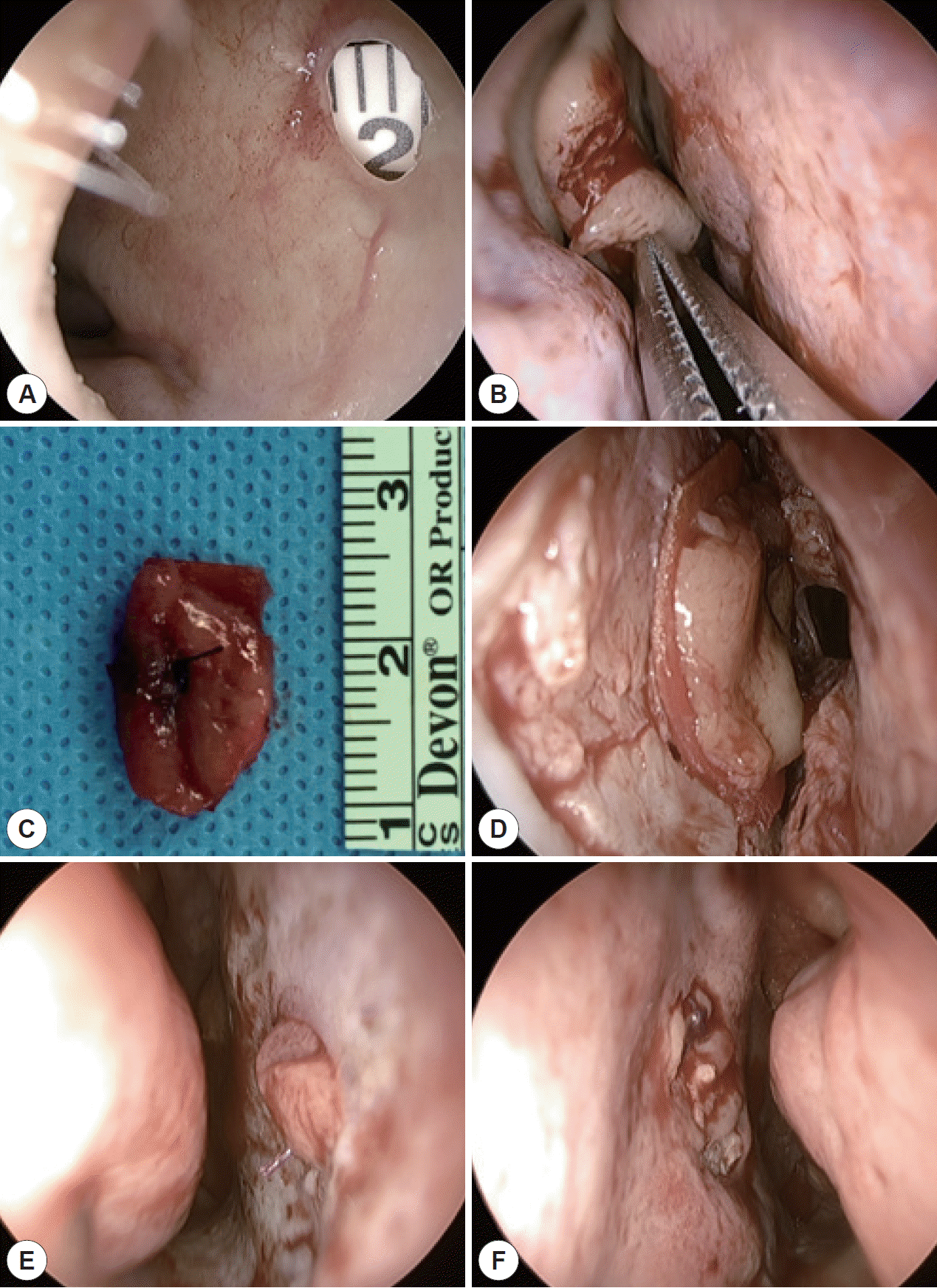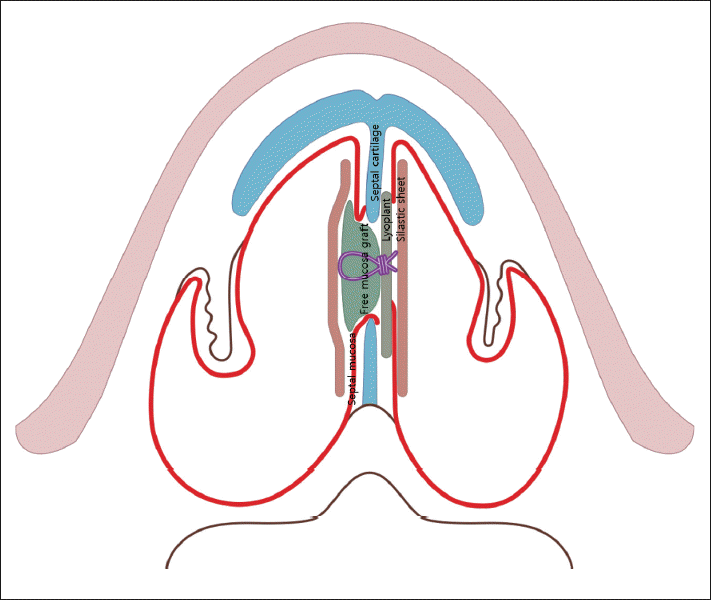1. Hier MP, Yoskovitch A, Panje WR. Endoscopic repair of a nasal septal perforation. J Otolaryngol. 2002; 31(5):323–6.
2. Lindemann J, Leiacker R, Stehmer V, Rettinger G, Keck T. Intranasal temperature and humidity profile in patients with nasal septal perforation before and after surgical closure. Clin Otolaryngol Allied Sci. 2001; 26(5):433–7.
3. Goh AY, Hussain SS. Different surgical treatments for nasal septal perforation and their outcomes. J Laryngol Otol. 2007; 121(5):419–26.
4. Mansour HA. Repair of nasal septal perforation using inferior turbinate graft. J Laryngol Otol. 2011; 125(5):474–8.
5. Tastan E, Aydogan F, Aydin E, Can IH, Demirci M, Uzunkulaoglu H, et al. Inferior turbinate composite graft for repair of nasal septal perforation. Am J Rhinol Allergy. 2012; 26(3):237–42.
6. Castelnuovo P, Ferreli F, Khodaei I, Palma P. Anterior ethmoidal artery septal flap for the management of septal perforation. Arch Facial Plast Surg. 2011; 13(6):411–4.
7. Vuyk HD, Versluis RJ. The inferior turbinate flap for closure of septal perforations. Clin Otolaryngol Allied Sci. 1988; 13(1):53–7.
8. Diamantopoulos II, Jones NS. The investigation of nasal septal perforations and ulcers. J Laryngol Otol. 2001; 115(7):541–4.
9. Mobley SR, Boyd JB, Astor FC. Repair of a large septal perforation with a radial forearm free flap: brief report of a case. Ear Nose Throat J. 2001; 80(8):512.
10. Ayshford CA, Shykhon M, Uppal HS, Wake M. Endoscopic repair of nasal septal perforation with acellular human dermal allograft and an inferior turbinate flap. Clin Otolaryngol Allied Sci. 2003; 28(1):29–33.
11. Kim SW, Rhee CS. Nasal septal perforation repair: predictive factors and systematic review of the literature. Curr Opin Otolaryngol Head Neck Surg. 2012; 20(1):58–65.
12. Murrell GL, Karakla DW, Messa A. Free flap repair of septal perforation. Plast Reconstr Surg. 1998; 102(3):818–21.
13. Kridel RW, Foda H, Lunde KC. Septal perforation repair with acellular human dermal allograft. Arch Otolaryngol Head Neck Surg. 1998; 124(1):73–8.
14. Winde F, Backhaus K, Zeitler JA, Schlegel N, Meyer T. Bladder augmentation using Lyoplant® : first experimental results in rats. Tissue Eng Regen Med. 2019; 16(6):645–52.
15. Meyer T, Schwarz K, Ulrichs K, Höcht B. A new biocompatible material (Lyoplant®) for the therapy of congenital abdominal wall defects: first experimental results in rats. Pediatr Surg Int. 2006; 22(4):369–74.






 PDF
PDF Citation
Citation Print
Print




 XML Download
XML Download